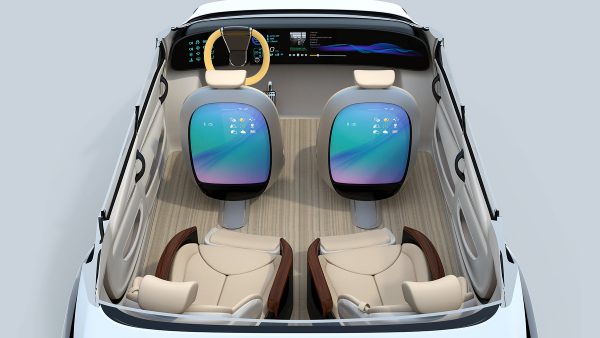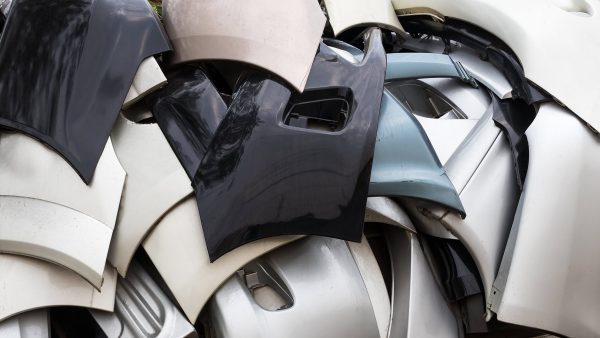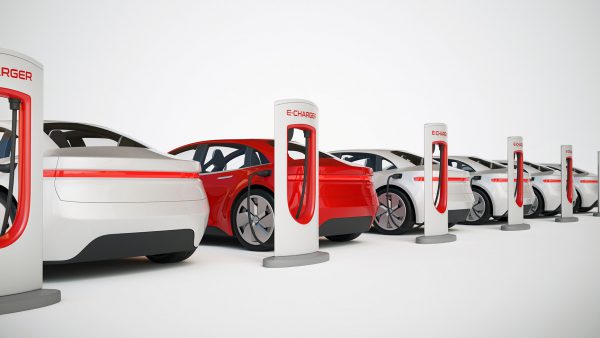The technological, cultural, and economic megatrends driving the personal mobility revolution require new ways of thinking about automotive innovation. This roadmap offers a new framework—ACCESS—for capturing the opportunities created by today’s automotive transformation.

Autonomy
Autonomy - The trend toward autonomous vehicle technology offers a range of opportunities for advanced plastics and polymer composites.

Connectivity
Connectivity – Adding electronics, sensors, and data processing to future vehicles creates opportunities for advanced plastics and polymer composites.

Circularity
Circularity - Advanced plastics and polymer composites can help improve automotive circularity: materials recovery, reuse, and refurbishment.

Electrification
Electrification – Electric vehicles provide opportunities for advanced plastics and polymer composites in areas like hybridization and propulsion.

Shared Mobility
Shared Mobility – Growth in ride- and car-sharing creates opportunities for automotive changes ideal for plastics, including vehicle interiors.

Sustainability
Sustainability - Advanced plastics and polymer composites address key sustainability objectives in lightweighting, multimaterial joining, and NDE.
Top 10 Priority Collaborative Activities
Although automotive plastics and polymer composites companies are already providing material solutions that can capture the areas outlined in the ACCESS framework, there are still many major opportunities that are too large and far-reaching for any one company to devote all the resources needed to respond.
Progress in these areas requires the advanced plastics and polymer composites industry to work together and with automotive partners, government agencies, and academic researchers to conduct pre-competitive research, development, demonstration, and commercialization activities. Supplementing the proprietary R&D efforts of individual companies with these collaborative efforts will produce the novel materials solutions automakers need to deliver the personal mobility of the future.
The sections that follow identify collaborative, pre- competitive activities in each of the ACCESS areas as well as suggested timeframes for addressing them. The top ten highest priority of these activities are bolded and numbered throughout the following sections and outlined in the adjacent table; they have been identified as such because tackling these activities will significantly accelerate the advancement of plastics and polymer composites and enable their integration into future mobility design through 2030.
| Near (2020–2022)Mid (2023–2025)Long (2026–2030) | |
|---|---|
Autonomy | |
| Demonstrate and prove the effectiveness of plastic and polymer composite components for increasing the ability of autonomous vehicles to detect surroundings during poor weather conditions | Near, Mid |
| Establish materials-agnostic automotive industry standards to permit the use of innovative materials for lightweight mixed-material assemblies | Mid |
Connectivity | |
| Define material performance requirements required to safeguard electrical and electronic system components | Near, Mid |
Circularity | |
| Establish an industry group or committee to identify and set LCA standards for automotive materials | Near, Mid, Long |
| Pursue high-speed nondestructive testing and evaluation (NDT/NDE) techniques for end-of-life sorting to rapidly identify grades of plastics and polymer composites for reuse and remanufacturing | Mid |
| Collaborate with state and local economic development groups and the automobile salvage industry on effective chemical and mechanical recycling strategies for non- commodity/mixed plastics | Near, Mid, Long |
Electrification | |
| Increase collaboration efforts among NHTSA and key advocacy groups to develop collision test methods for vehicle battery systems | Near, Mid |
Shared Mobility | |
| Conduct a demonstration project for durable interior automotive plastics and polymer composites with high usage rates | Near, Mid |
Sustainability | |
| Demonstrate the performance benefits of structural adhesive joining techniques or plastics-based fasteners as a means for ease of maintenance, repair, and disassembly | Near, Mid |
| Develop embedded non-destructive failure and damage detection systems (e.g., structural health monitoring) suitable for all polymeric materials systems | Mid, Long |

